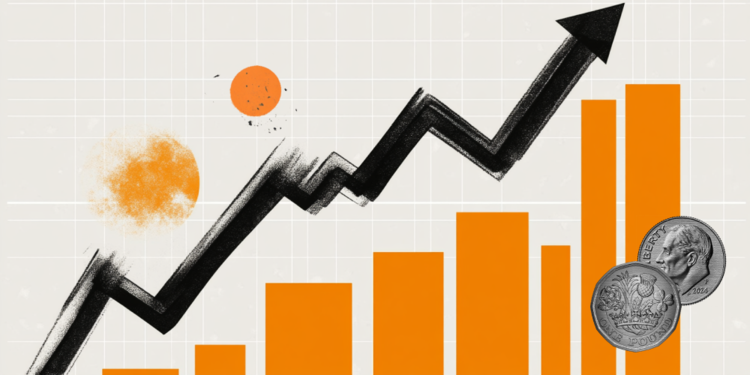The GBP/USD pair gains positive traction for the second successive day on Thursday and recovers further from its lowest level since early August, around the 1.3250-1.3245 region touched earlier this week. The US Dollar (USD) selling remains unabated and turns out to be a key factor acting as a tailwind for the currency pair, which largely shrugged off rather unimpressive UK macro releases.
The Office for National Statistics (ONS) reported that the British economy expanded by a lackluster 0.1% in August. This was in line with consensus estimates, though it was offset by a downward revision of the previous month’s reading, which showed that the economy contracted by 0.1%. Meanwhile, the UK Industrial Production rose by 0.4% in August following a 0.4% fall in the previous month. Furthermore, the Manufacturing Production grew 0.7% during the reported month against estimates of 0.4% and the 1.1% decline recorded in July. Separately, the UK trade data showed that the deficit widened to £5.2 billion in the three months to August, partly due to a drop in exports to the European Union and the US.
The British Pound (GBP), however, reacted little amid speculations that the Bank of England (BoE) could continue cutting rates gradually, bolstered by Tuesday’s disappointing UK employment details. According to the official data, regular pay grew at the weakest pace since 2022, and the ILO Unemployment Rate unexpectedly edged up to 4.8% in the three months to August. This pointed to some signs of cooling in the UK jobs market and allow the BoE to bring forward a rate cut. However, the prevalent weaker sentiment around the USD – amid dovish Federal Reserve (Fed) expectations – offsets the negative factors and assists the GBP/USD pair to stick to modest gains through the first half of the European session.
Fed Chair Jerome Powell struck a dovish tone on Tuesday, saying that the labor market remained mired in its low-hiring, low-firing doldrums through September. The comments reaffirmed market bets for a 25-basis-point (bps) rate cut at each of the October and December meetings. This, along with economic risks stemming from the US government shutdown and renewed US-China trade tensions, keeps the USD depressed. The Senate once again failed to advance the Republican-backed stopgap funding bill to reopen the government for a ninth time on Wednesday, with the shutdown stretching into a third week.
A Treasury official said that the shutdown may cost the US economy $15 billion a week in lost output, correcting an earlier statement from Treasury Secretary Scott Bessent. Meanwhile, the US broadened tech restrictions after China outlined tighter export controls on rare earths. Moreover, both countries announced port fees on vessels linked to each other’s fleets, fueling worries about an all-out trade war between the world’s two largest economies. Bessent, however, proposed a pause of import duties on Chinese goods for longer than three months if China halts its plan for strict export controls on critical minerals.
Traders now look forward to speeches from a slew of influential FOMC members for more cues about the rate-cut path. This, in turn, will play a key role in driving the USD demand during the North American session and providing some meaningful impetus to the GBP/USD pair. Nevertheless, the aforementioned mixed fundamental backdrop warrants some caution before positioning for any further near-term appreciating move.
GBP/USD 4-hour chart

Technical Outlook
The intraday move up lifts the GBP/USD pair beyond the 38.2% Fibonacci retracement level of the recent pullback from the 1.3725 region, or over a two-month peak touched in September. Furthermore, oscillators on the 4-hour chart have been gaining positive traction and back the case for additional gains. Hence, a subsequent move up towards the 50% Fibo. retracement level, around the 1.3480-1.3485 area, looks like a distinct possibility. Some follow-through buying beyond the 1.3500 psychological mark will be seen as a fresh trigger for bullish traders and lift spot prices to the 1.3545-1.3550 region, or the 61.8% Fibo. retracement level.
On the flip side, any corrective slide below the 1.3400 round figure could be seen as a buying opportunity and find a decent support near the 1.3355 region (23.6% Fibo. level). A convincing break below the latter would make the GBP/USD pair vulnerable to accelerate the fall towards the 1.3300 round figure. The downward trajectory could extend further towards retesting a two-and-a-half-month low, around the 1.3250-1.3245 region, touched on Tuesday.







